We recently spent time traveling in Japan, and I won’t bore you with a blow-by-blow of everything we did and saw. (It was a lot. Many stairs were involved. When I discovered Enoshima had an escalator up to the Sea Candle observatory named The Luminous Way, it was a welcome sight and aptly named.) I will share, however, some thoughts that struck me while visiting.
One of my favorite places was Otagi Nenbutsu-ji, a temple near Arashiyama where over 1000 stone figures inhabit the temple grounds. (You can read about it here.) After a series of disasters kept befalling this temple, a new head priest, who was also a sculptor, had the idea of allowing local people to carve their own statues of Buddha’s disciples. Added to the temple in the 80s, (which is why you can see one holding what looks like a Walkman), the statues look older due to their exposure to the elements. Their whimsical faces and expressions reminded me of the joy and life that should come from faith/reverence, not just solemnity and judgment. Instead of feeling out of place, the statues, with their quirks and individuality, were a perfect representation of any gathered congregation, each person unique in their contributions and their flaws.
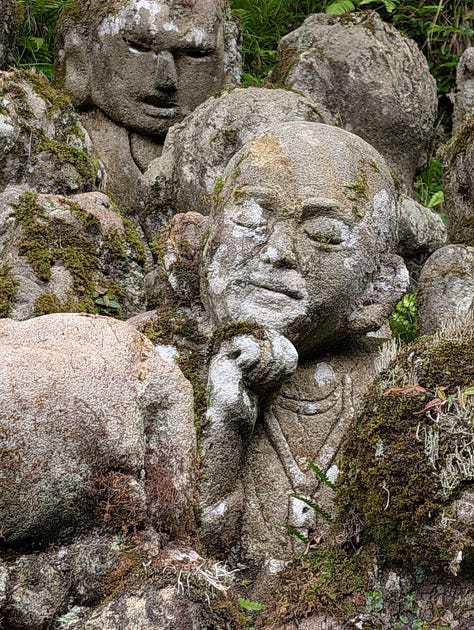
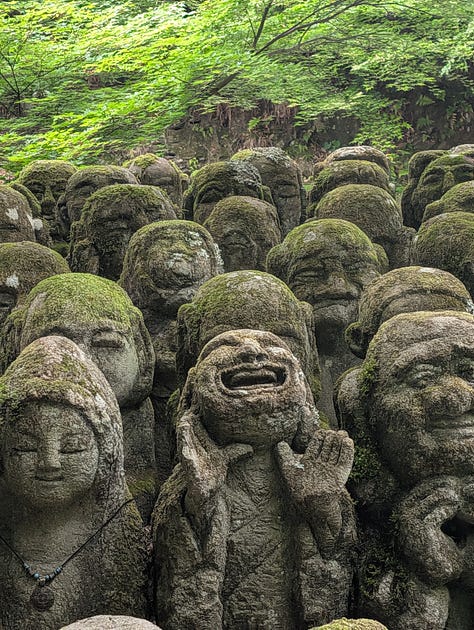
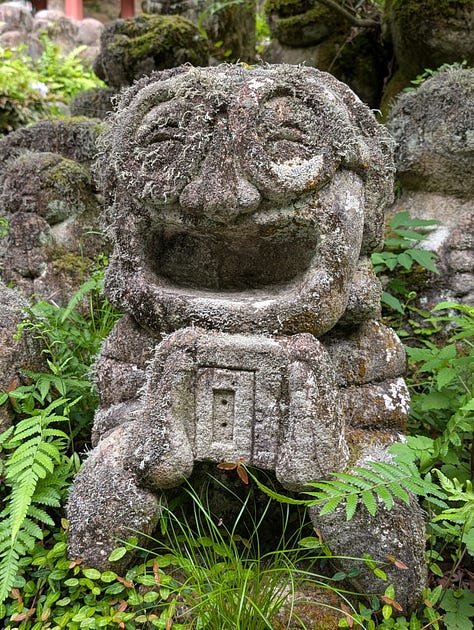
Ah, but there was also room for awe and mystery. The temple at Sanjūsangen-dō (where photos were not allowed) features 1000 statues of Kannon, the goddess of mercy. The awe-inspiring gathering of statues dates from the 13th century and was a quiet antidote to the bustle of other temples. To encounter a battalion whose weapons of choice are mercy and compassion was an idea that appealed to me.
Holding a similar mystery were the Torii gates, placed at the entry to each temple. Particularly moving were the Senbon Torii (1000 Torii) Gates outside of Kyoto. Rather than entering with the masses, my husband researched and found a trail to enter through the forest where the gates have remained untouched. Some have fallen, some are rotting, some are being reclaimed by foliage. There were no other people in this section. All we could hear was birdsong. These testaments to a time-worn path to worship, their connections to the natural landscape, made of the forest a sort of cathedral without walls.
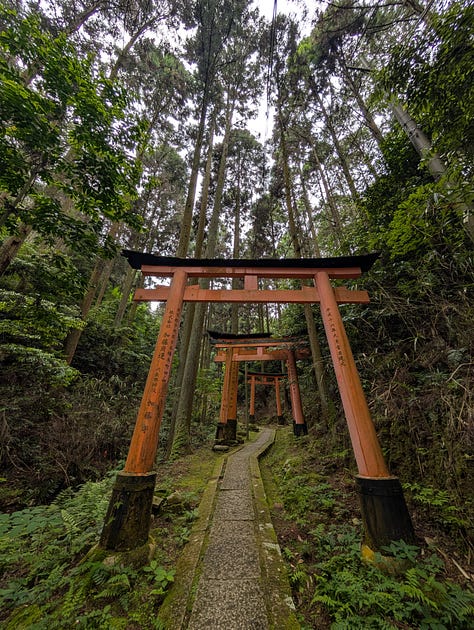
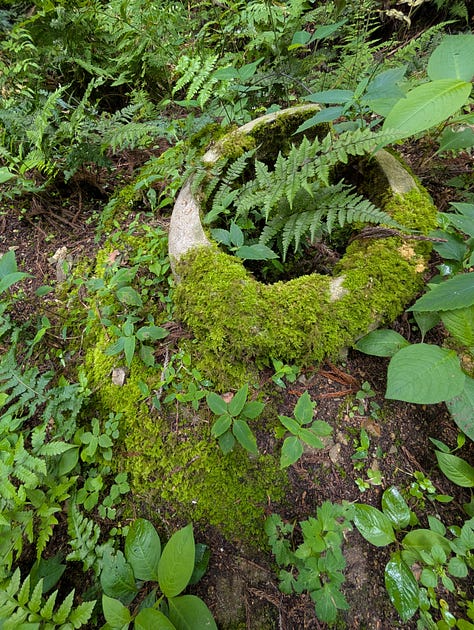
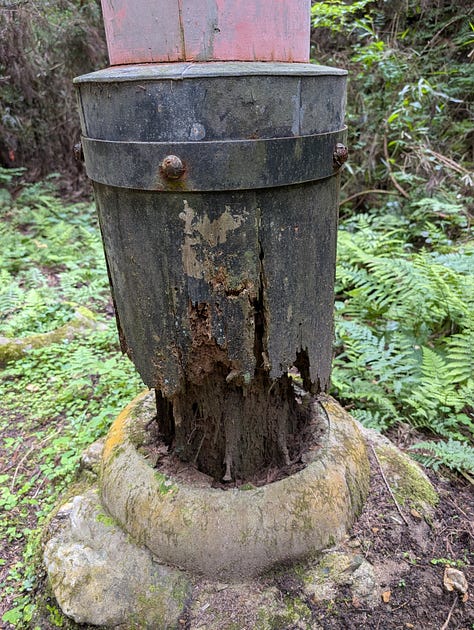
And, though one might think that visiting many temples and statues over the course of days would seem monotonous, the intimacy of each setting, the subtle differences in the faces and the materials, and the careful gestures of each Buddha or guardian or goddess made each one a figure worthy of awe. Iconography at its best should make the viewer feel something, even if that iconography is not necessarily connected to one’s own belief system. I can say that these encounters did just that. They gave me a sense of peace, of awe, of history, of joy, of possibility, of admiration.
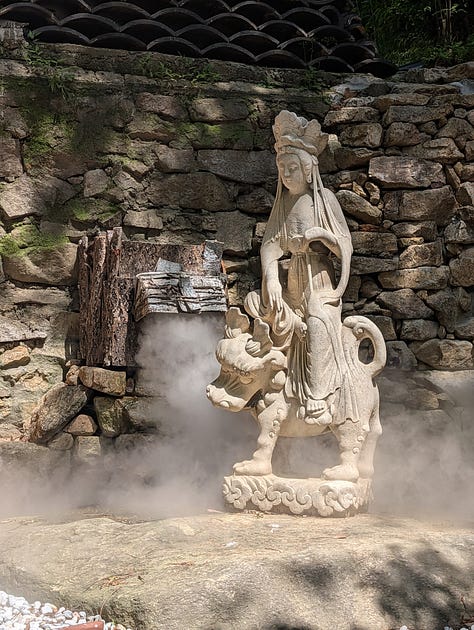
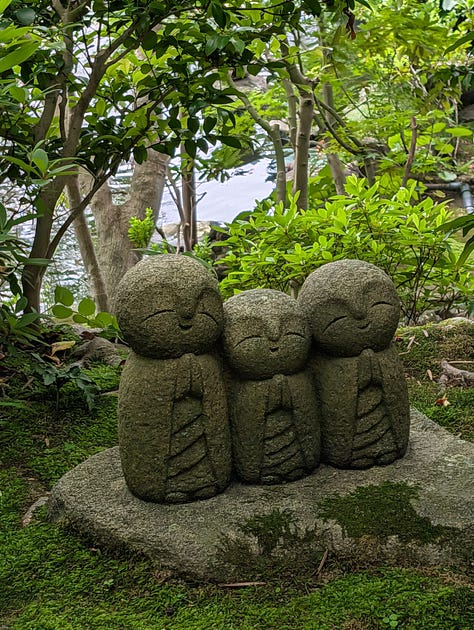
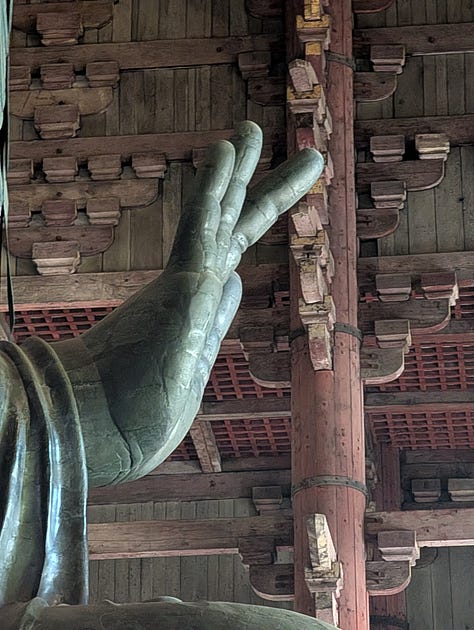
I didn’t have much time to write on the trip (though I did do some note-taking on my phone since I did not have my computer and I did a little writing on the train, both of which were new experiences for me.)
If you would like to write, here’s a prompt for you.
What physical structures or places have evoked a sense of reverence or awe in you? Choose one and write a draft where you try to give a sense of the place through syntax, diction, and sound.


